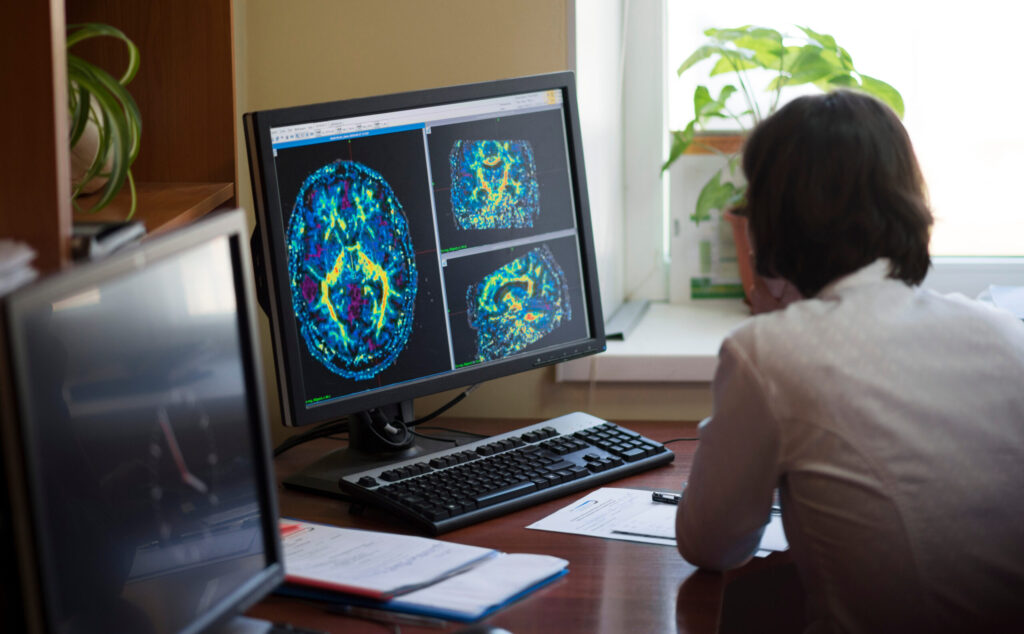
Multiple sclerosis (MS) is a progressive autoimmune disease resulting from damaged nerve sheaths in the brain and spine. While this disease is known for the muscle weakness that it causes over time, MS initially has the same symptoms as many other common illnesses, making it difficult to diagnose quickly.
Although multiple sclerosis is incurable, treatments have become available to reduce symptoms, inspire periods of remission, and prevent the development of new lesions. What causes multiple sclerosis to develop? What are the risk factors? And how is the condition treated?
Why does multiple sclerosis develop?
Multiple sclerosis begins in the immune system. The condition is activated by an abnormal immune response in which the immune cells attack the fatty layers that protect the brain and spinal cord's nerve fibers. Protected nerve fibers can successfully send electrical signals throughout the body; damaged ones cannot. This can lead to the symptoms of multiple sclerosis.
Multiple tests are often needed to confirm a diagnosis of multiple sclerosis. A neurological assessment will help create a clear picture of one's symptoms and clarify any regression in muscle strength, memory, reflexes, and balance. An MRI can examine brain or spinal cord lesions (scarred tissue) that may indicate multiple sclerosis. Electrode tests, spinal taps, and blood tests may reaffirm MS and rule out other diagnoses.
Common symptoms of MS include:
- Struggles with mobility
- Ongoing fatigue
- Muscle pain, spasms, and stiffness
- Numbness in hands and feet
- Difficulty swallowing or speaking
- Brain fog and memory issues
Multiple sclerosis symptoms can range from mild to severe. Most people with the condition will not develop all of the symptoms of the disease, and many with the condition will experience a flux of good and bad periods of health. Windows of remission from multiple sclerosis symptoms may arrive, followed by relapses where they return.
Risk factors for multiple sclerosis
While the exact reason why multiple sclerosis develops is still unknown, there are risk factors that can contribute to the onset or progression of the disease.
One of the primary risk factors for multiple sclerosis is contracting the Epstein-Barr virus (EBV). EBV, known commonly as mono, multiplies one's risk of developing multiple sclerosis by over 30. The structure of EBV resembles the brain's proteins. The immune system may mistake the virus for proteins and attack healthy cells. The resulting damage can clear the path for MS down the line.
Though multiple sclerosis is not passed down directly, a family history of MS may put one at risk of developing the condition. A genetic mutation on the 6p21 chromosome has shown an association with multiple sclerosis diagnoses. Other autoimmune disorders—including diabetes, pernicious anemia, and psoriasis—may also boost one's chances of multiple sclerosis.
Environmental factors also contribute to the onset of the condition. Childhood or teenage obesity may add to one's risk of multiple sclerosis. For those living in low-sunlight areas, vitamin D deficiency can take a toll, too. Geographic location, specifically where one lived as an adolescent, correlates with clustered multiple sclerosis cases. Studies have suggested that those who grow up further from the equator are more prone to the condition.
Lastly, demographic risk factors can play a role in the onset of multiple sclerosis. One of these is age, as the condition tends to emerge in those between 20 and 40. Race also contributes, as white Europeans are the primary group diagnosed with multiple sclerosis. Additionally, women are two to three times as likely as men to experience relapsing multiple sclerosis.
How is multiple sclerosis treated?
There is no cure for multiple sclerosis, though treatment can help those with the condition achieve symptom relief or remission. The goals of these treatments are to reduce multiple sclerosis activity so that one can live an engaged, energetic life.
Therapies and medication are the primary treatments for multiple sclerosis. Disease-modifying therapies (DMTs) or drugs (DMDs) may lessen symptoms, stop new MS lesions from forming, and change how multiple sclerosis develops to reduce relapses. These therapies may include oral or injected medications, stem cell therapy, or other forms of medical intervention.
Physical and emotional therapy can help improve overall health. Since multiple sclerosis may lead to weakness, physical therapy strengthens muscles to improve mobility. Psychotherapy can help those with the condition cope with the stressors of illness and retain a positive outlook on the future.
There is no cure for MS, but research on multiple sclerosis remains strong, with many organizations dedicated to improving patient care and outcomes. Hopefully, more diagnostic tools and treatments will be available to support those with multiple sclerosis in the coming years.
Resource Links
"Multiple sclerosis" via Mayo Clinic
"What Causes MS?" via National Multiple Sclerosis Society
"Causes: Multiple sclerosis" via NHS
"Possible causes and risk factors of multiple sclerosis" via Multiple Sclerosis News Today
"Treating MS" via National Multiple Sclerosis Society
"Multiple Sclerosis (MS)" via Cleveland Clinic
"Disease modifying therapies" via MS Society
"How is MS diagnosed" via MS Society






